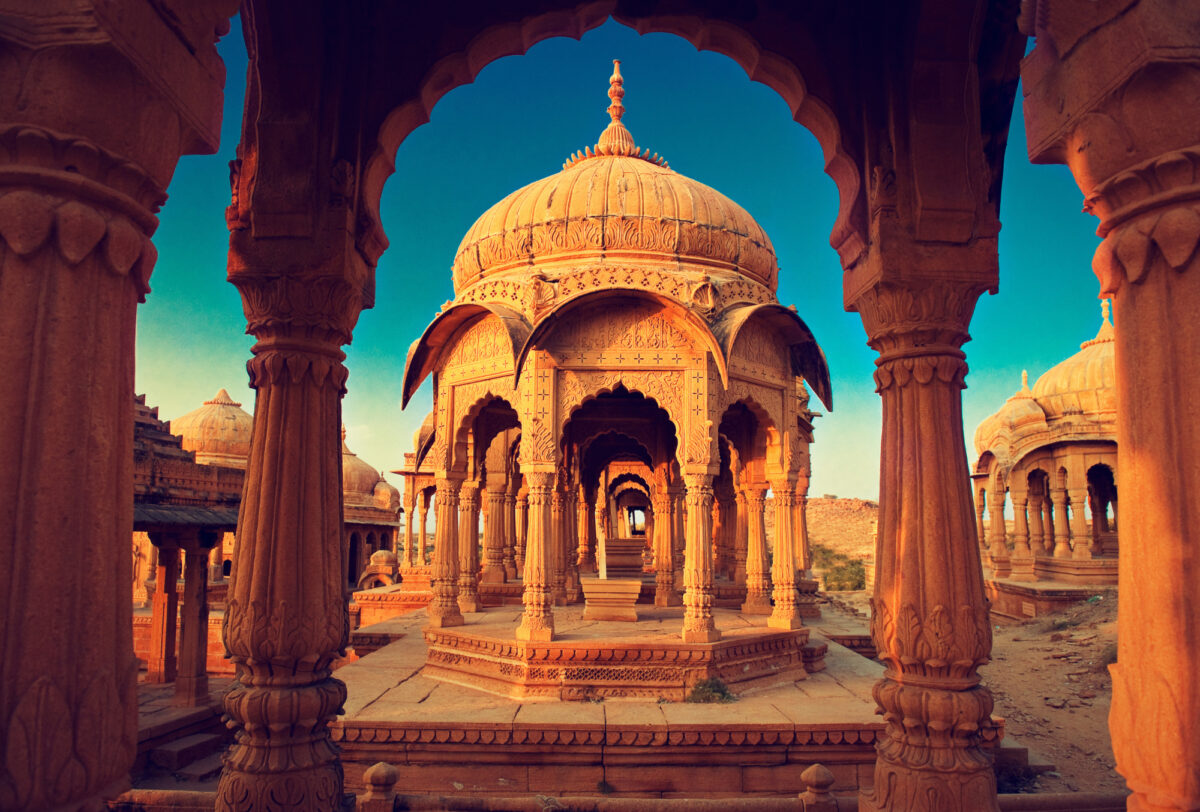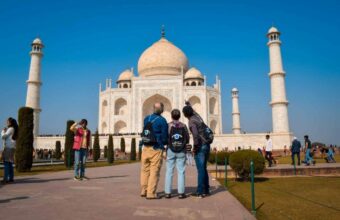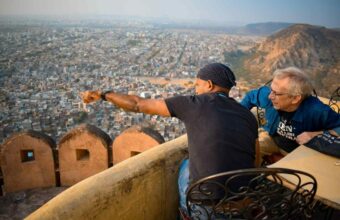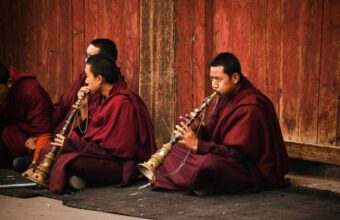What to see in Jaisalmer
The golden city comes alive
An 800-year old living fort, the never-ending sand dunes of the Thar Desert and haunting tales bring the Golden City of Jaisalmer alive.

Highlights
Glowing in shades of yellow, Jaisalmer was founded in the 12th century by Rawal Jaisal of the Bhatti clan and is famous for its fort. It earned the name the Golden City from the yellow sandstone used to build the fort and houses of the Old Town, creating a golden glow over the town. Nearly 4,000 people still live in Jaisalmer Fort — more than a quarter of Jaisalmer’s population.
Jaisalmer Fort
The second oldest fort in Rajasthan, Jaisalmer Fort is a UNESCO World Heritage site and along with seven others (Amer Fort in Jaipur, Chittor Fort in Chittorgarh, Kumbhalgarh Fort in Kumbhalgarh, Ranthambore Fort at Sawai Madhopur, Gagron Fort in Jhalawar, Mehrangarh Fort in Jodhpur and Jaigarh Fort in Jaipur), are collectively known as the Hill Forts of Rajasthan.
The earliest settlement in the fort came up in the 17th century. The fort is built of yellow sandstone and the colour changes as the day progresses, from a light gold in the morning to a deep honey at sunset.
Standing at the top of the fort, you get a view of the entire old town. There are 99 bastions and four fortified entrances. Inside the fort, you can see the Laxminath temple dedicated to the Hindu god of wealth Lakshmi and her consort Vishnu, ancient Jain temples and the traditional Rajput architecture of the Raj Mahal Palace.
However, Jaisalmer is more than just a series of temples and palaces. This is a living fort, which nearly 4,000 people still call home. Its narrow alleyways are lined with shops, restaurants and guesthouses.
Jain temples
Jaisalmer has a huge legacy of Jainism. Built in the traditional Dilwara architectural style, the fort houses seven Jain temples known for their art and intricate carvings. Remember that no photos are allowed inside the temples.
For more on Jainism, visit the town of Lodhruva 15km from Jaisalmer. Here, you’ll find magnificent Jain temples dedicated to the 23rd tirthankar (Jain great teacher). Rebuilt in the 1970s after years of ruin, the temples still bear the scars of past battles.
Look out for a pair of cobras who live in the compound — seeing either is said to bring good luck.
Fort Palace Museum
Towering over the main square of the fort is the seven storey Fort Palace Museum. Formerly the Raj Palace (Palace of Kings), the museum is home to the mirrored Rang Mahal, which is filled with paintings and sculptures from the 15th century. Most of the palace is open to visitors, allowing you to explore the small rooms and stooped walkways designed for spying on the outside world. Head to the top of the palace for views over the city.
Gadisar Lake
A man-made lake created right in the heart of the city, Gadisar Lake is surrounded by chattris (elaborate ornate tombs and cenotaphs), temples and stepwells. First created by Jaisalmer founder Raja Rawal Jaisal and then rebuilt by King Garisisar, the lake is a good spot to see migratory birds stopping for a drink.
Patwon Ki Haveli
Ornate merchant mansions dot Jaisalmer and the most lavish and grand among them is the 19th century Patwon Ki Haveli. Now a museum, Patwon Ki Haveli is worth visiting for its architecture, intricate designs and history. The complex is a combination of five havelis and each is filled with stunning murals, mirror-work and paintings. The haveli belonged to merchant Guman Chand Patwa and his sons, who traded in gold, silver and brocade embroidery.
There are also two other beautiful havelis worth visiting — Nathmal Ki Haveli, which is guarded by two elephants carved in yellow sandstone, and the peacock-like grand roof of Salim Singh Ki Haveli.
Sam Dunes
A trip to Jaisalmer is not complete without a camel ride in the sand dunes. Although there are several dunes around the city, the most popular is Sam Dunes, found 40km outside the city. Head there early morning or at sunset for great photographs. Khuri Dunes is another popular destination.
Desert Cultural Centre and Museum
This small museum tells the story of Rajasthan’s various princely states and explores the history behind traditional Rajasthani culture, including music and textiles. The centre hosts a nightly puppet show in English.
Abandoned Kuldhara
Take the eerie trail to Kuldhara, an abandoned, haunted village 35km from Jaisalmer in the desert, to learn the tale of the 18th century Paliwal Brahmins. According to legend, the Paliwal were harassed by the local ruler who set his heart on one of the girls in the community. The Paliwal were given just a day to accept his proposal. Overcome by desperation, the entire community left their homes and escaped in the death of the night. Legend says that after several centuries, the Paliwal returned as ghosts to revisit their homes and the village is haunted. You can visit Kuldhara during the day to see the abandoned village and if you are curious, try braving it at night.









